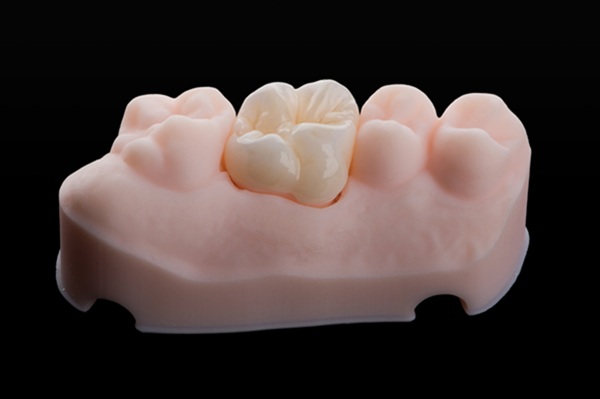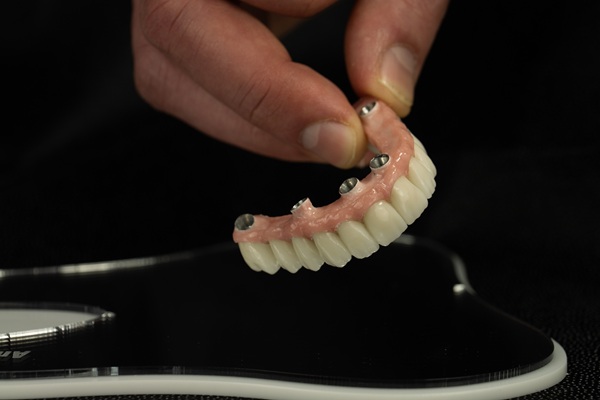Is There a Relationship Between Gum Disease and Diabetes?

Many individuals are familiar with gum disease. What may be unknown, however, is the relationship of diabetes to problems with the gums. Diabetes is the result of multiple diseases within the body that accumulate from too much sugar in the bloodstream. Sugar often becomes the culprit that is responsible for an individual's gum disease. Continue reading to find out how gum disease, diabetes and sugar all relate.
Gum disease and diabetes
Below is an overview of the relationship between gum disease and diabetes, which are two conditions that can negatively affect people's overall health.
Gum disease
Gum disease comes in many stages, starting with a small infection and ending with periodontal disease, which is the most advanced stage of infection reached in the gums. A number of factors may contribute to gum disease, but it is typically the result of a lack of oral hygiene, poor genetics, or excessive sugar consumption.
The relationship
Individuals who have been diagnosed with diabetes are at a higher risk of developing oral problems such as gum disease. When one's blood sugar levels are not normal, diabetes is the result. Unfortunately, diabetics who do not manage their blood sugar levels effectively may experience a number of health conditions, including nerve damage, heart problems, and gum disease.
In the case of gum disease, high blood sugar levels negatively affect the blood vessels, which results in a lack of nourishment and oxygen to the soft tissues of the oral cavity. If the soft tissues are not receiving the appropriate amount of oxygen and nourishment, then gum disease can develop. Additionally, blood sugar levels that are not maintained or controlled can cause an increase of glucose in the saliva. Excessive glucose in the saliva becomes a breeding ground for bacteria, which means multiplication throughout the oral cavity, thus increasing the chances that gum disease will develop.
On the flip side, gum disease can also lead to the development of long-term diabetes. When the soft tissues of the oral cavity are infected for long periods of time, the infection can travel to other parts of the body through the bloodstream. Excessive sugar consumption often causes infections in the oral cavity, and when it travels in the bloodstream, blood sugar levels can elevate or even become out of control, thus resulting in diabetes.
Preventing gum disease
Developing a regular oral hygiene routine and faithfully carrying it out can go a long way toward avoiding gum disease. The following simple habits can help ward off infections of the gums:
- Brush the teeth at least twice a day or after every meal
- Floss daily
- Rinse with salt water once a day or use a gentle mouthwash 3-4 times a week
- Undergo routine dental cleanings from a dentist
Find out more from a general dentist
Individuals who are worried that diabetes may develop as a result of gum disease may find it helpful to consult with a general dentist. An evaluation can be completed to determine whether gum disease is even present. From there, the dentist can prepare a treatment plan and put it in place. Reach out today to ask questions or to get started with a consultation.
Request an appointment here: https://www.tucsonazdentistry.com or call Advanced Family Dentistry at (520) 353-3002 for an appointment in our Tucson office.
Check out what others are saying about our dental services on Yelp: Gum Disease in Tucson, AZ.
Recent Posts
Gum disease is a progressive condition that is caused by bacteria in the mouth getting into gum tissues. Your immune system responds to this invasion by sending off antibodies to fight off the invaders. The ensuing battle leads to inflammation and damage to the structures that support teeth.The first stage of gum disease is called…
There are different stages of gum disease, with each stage being based on the severity of the infection. Because there are different stages of gum disease, it can be difficult to differentiate between each one. When trying to determine what stage the infection is at, it is best to begin with a visit with a…
Many are familiar with ceramic and metal crowns but may be less familiar with the unique advantages of zirconia crowns for repairing damaged teeth. This review highlights and answers frequently asked questions about zirconia crowns to help you decide if they may be the right type of dental restoration for you.Common questions that patients have…
For patients missing multiple teeth, All-on-4® dentures are an excellent restorative option. These implant-supported dentures can transform a patient's smile. Many patients prefer this type of denture, as it is more secure and natural-looking than a regular denture.Before committing to this procedure, patients need to understand the process. The dentist should explain the benefits of…


